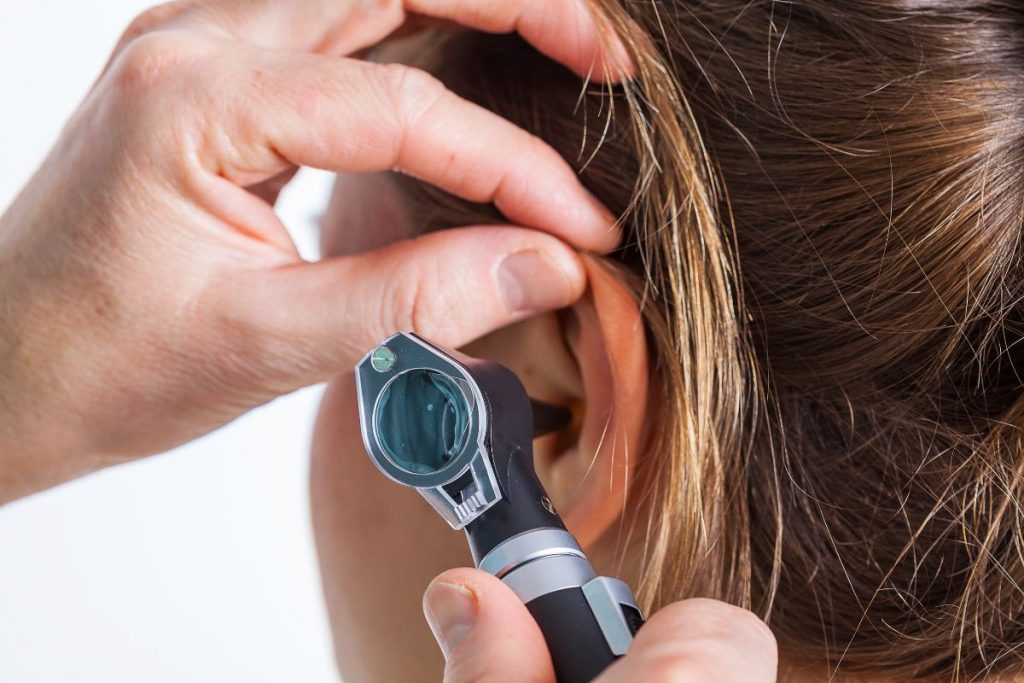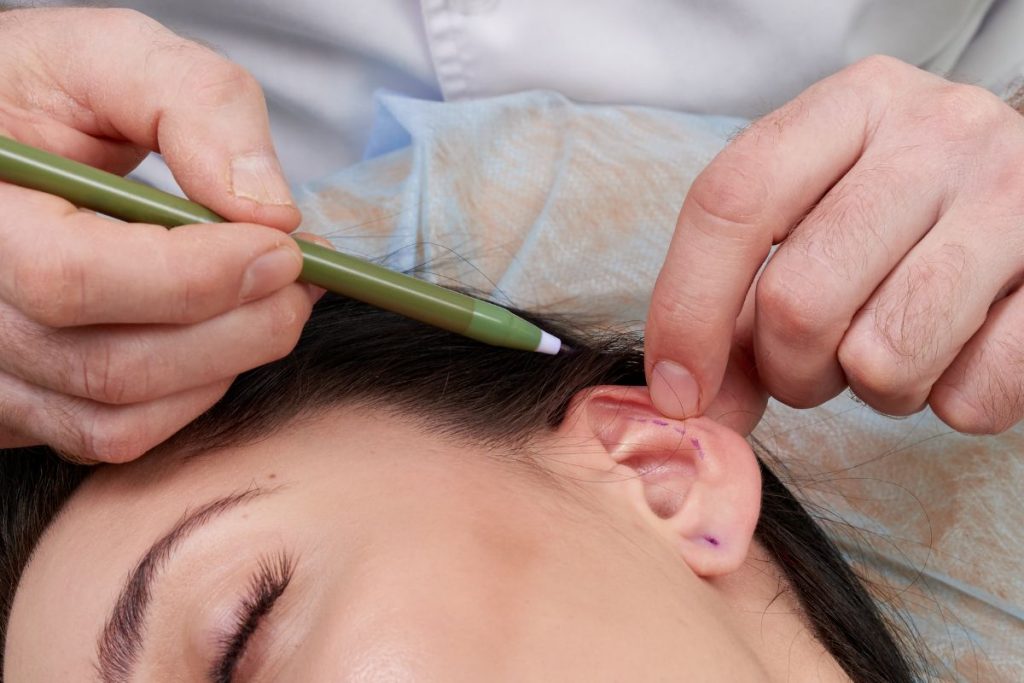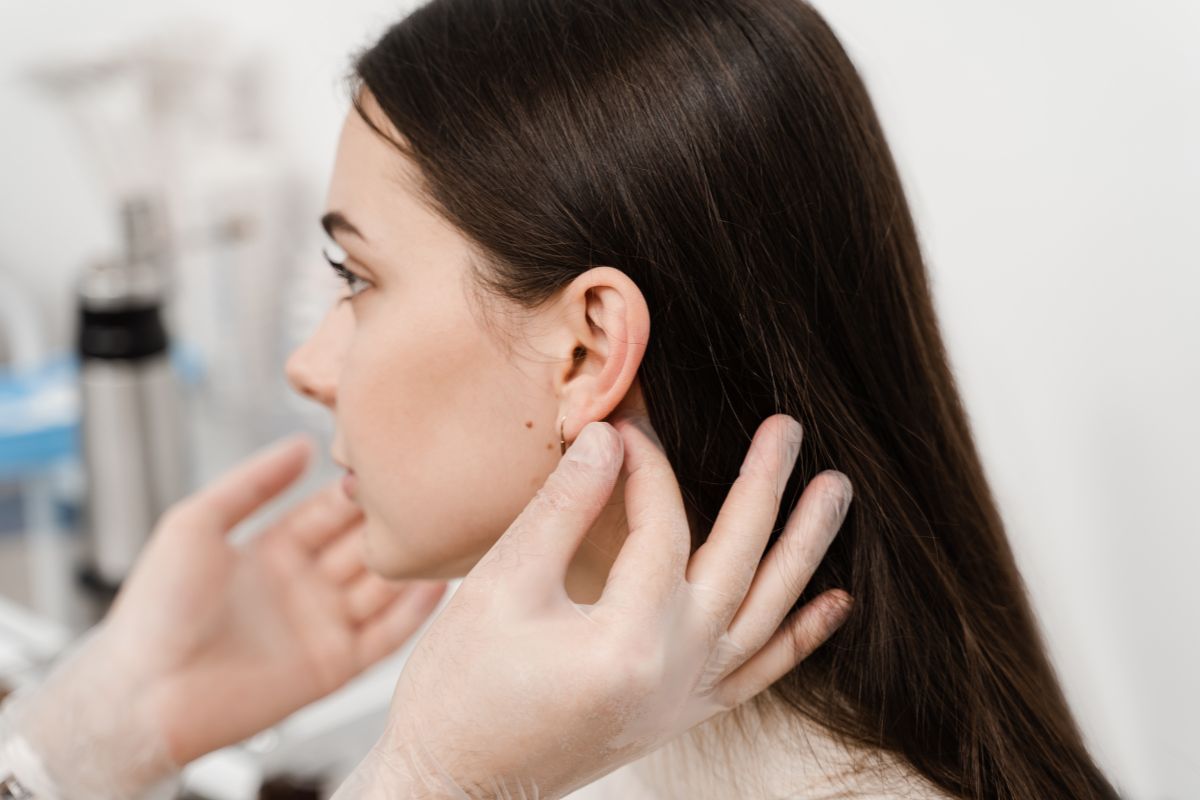Introduction to The Importance of Hearing Preservation in Ear Surgery

In the discourse presented here, Dr. Shree Rao provides information about The Importance of Hearing Preservation in Ear Surgery. She is the Best Doctor for Cochlear Implants.
In the realm of otolaryngology, the preservation of hearing function stands as a paramount concern during ear surgeries. Guided by the expertise of professionals like Dr. Shree Rao, the significance of hearing preservation in these procedures becomes evident. This introduction delves into the critical role that hearing preservation plays in ear surgeries, highlighting the delicate balance between addressing underlying conditions and safeguarding auditory function. By understanding the importance of hearing preservation and adopting appropriate surgical techniques, patients can embark on a journey toward improved ear health and sustained hearing capabilities.
Common Ear Disorders
Ear disorders encompass a range of conditions affecting the delicate structures of the outer, middle, and inner ear, often leading to hearing impairment, balance issues, or discomfort. Here are some of the most prevalent ear disorders:
Otitis Media: Otitis media refers to inflammation or infection of the middle ear, often occurring as a result of bacterial or viral infections. Common symptoms include ear pain, fever, hearing loss, and fluid drainage from the ear. If left untreated, otitis media can lead to complications such as tympanic membrane perforation or chronic middle ear infections.
Otitis Externa (Swimmer’s Ear): Otitis externa is inflammation or infection of the external ear canal, typically caused by bacterial or fungal overgrowth. It is often associated with swimming or water exposure, hence the term “swimmer’s ear.” Symptoms may include ear pain, itching, redness, swelling, and discharge. Prompt treatment with ear drops and antibiotics is essential to prevent complications such as cellulitis or abscess formation.
Otosclerosis: Otosclerosis is a progressive disorder characterized by abnormal bone growth in the middle ear, specifically around the stapes bone (the smallest bone in the human body). This can result in conductive hearing loss due to impaired sound transmission to the inner ear. Symptoms may include gradually worsening hearing loss, tinnitus (ringing in the ear), and dizziness. Surgical intervention such as stapedectomy or hearing aids may be necessary to manage symptoms and improve hearing.
Cholesteatoma: A cholesteatoma is an abnormal skin growth in the middle ear or mastoid bone, often occurring as a complication of chronic middle ear infections or eardrum perforations. As the cholesteatoma expands, it can erode nearby structures, leading to hearing loss, ear pain, discharge, and recurrent infections. Treatment typically involves surgical removal of the cholesteatoma to prevent further damage and restore ear function.
Acoustic Neuroma: Acoustic neuroma, also known as vestibular schwannoma, is a noncancerous tumor that develops on the vestibulocochlear nerve, which connects the inner ear to the brain. While usually slow-growing, acoustic neuromas can cause symptoms such as hearing loss, tinnitus, imbalance, facial numbness, and headaches as they compress surrounding structures. Treatment options include observation, surgical resection, or stereotactic radiosurgery, depending on the size and location of the tumor.
Surgical Procedures in Ear Surgery

Ear surgery encompasses a variety of surgical procedures aimed at addressing structural abnormalities, treating diseases, and restoring hearing function in patients with ear disorders. These procedures are typically performed by otolaryngologists (ear, nose, and throat specialists) with specialized training in ear surgery. Here are some common surgical procedures used in ear surgery:
Myringoplasty: Myringoplasty, also known as tympanoplasty type I, is a surgical procedure used to repair a perforated eardrum (tympanic membrane). During the procedure, the surgeon grafts a small piece of tissue onto the perforated eardrum to seal the hole and restore its integrity. Myringoplasty is often performed to improve hearing and prevent recurrent ear infections in patients with chronic perforations.
Tympanoplasty: Tympanoplasty is a surgical procedure used to repair a damaged or diseased eardrum (tympanic membrane) and restore middle ear function. Depending on the extent of the damage, tympanoplasty may involve various techniques, such as tympanoplasty type I (myringoplasty), tympanoplasty type II (subtotal perforation repair), or tympanoplasty type III (total tympanic membrane reconstruction). Tympanoplasty is indicated for conditions such as chronic otitis media, traumatic eardrum perforations, or congenital abnormalities.
Mastoidectomy: Mastoidectomy is a surgical procedure used to remove infected or diseased tissue from the mastoid bone, located behind the ear. It is typically performed to treat chronic mastoiditis, a complication of untreated middle ear infections characterized by inflammation and infection of the mastoid air cells. Mastoidectomy may involve various techniques, including cortical mastoidectomy, radical mastoidectomy, or modified radical mastoidectomy, depending on the extent of the disease and the goals of surgery.
Stapedectomy: Stapedectomy is a surgical procedure used to treat otosclerosis, a condition characterized by abnormal bone growth in the middle ear, specifically around the stapes bone. During the procedure, the surgeon removes the stapes bone and replaces it with a prosthetic device (stapes prosthesis) to restore hearing function. Stapedectomy is indicated for patients with conductive hearing loss due to otosclerosis who have not responded to medical management.
Cochlear Implantation: Cochlear implantation is a surgical procedure used to treat severe to profound sensorineural hearing loss by bypassing damaged hair cells in the cochlea and directly stimulating the auditory nerve. During the procedure, an electrode array is surgically implanted into the cochlea, and a receiver-stimulator device is placed under the skin behind the ear. Cochlear implantation is indicated for individuals who derive limited benefit from hearing aids or have severe hearing loss that cannot be corrected with other interventions.
Preservation Techniques
Preservation techniques in ear surgery refer to surgical approaches and strategies aimed at protecting delicate structures within the ear while addressing pathological conditions and restoring hearing function. These techniques are crucial for minimizing the risk of complications and preserving residual hearing in patients undergoing ear surgery. Here are some common preservation techniques used by otolaryngologists (ear, nose, and throat specialists) during ear surgery:
Microscopic Surgery: Microscopic surgery involves using a surgical microscope or endoscope to visualize and access the structures within the ear with precision and accuracy. By magnifying the surgical field, microscopic surgery allows for meticulous dissection and manipulation of delicate tissues while minimizing trauma to surrounding structures. This technique is particularly valuable for procedures such as tympanoplasty, stapedectomy, and cochlear implantation, where precise placement of surgical instruments is critical for optimal outcomes.
Minimally Invasive Techniques: Minimally invasive techniques involve using small incisions and specialized instruments to perform ear surgery with minimal disruption to surrounding tissues. These techniques reduce surgical trauma, minimize postoperative pain and discomfort, and promote faster recovery times compared to traditional open procedures. Examples of minimally invasive techniques in ear surgery include endoscopic ear surgery (transcanal and transmastoid approaches) and laser-assisted surgery for conditions such as otosclerosis and cholesteatoma.
Tissue Preservation: Tissue preservation techniques involve preserving as much healthy tissue as possible while removing diseased or damaged tissue during ear surgery. This may include meticulous dissection of tissues, careful handling of delicate structures, and selective removal of pathological tissue while sparing healthy structures. Tissue preservation is essential for minimizing postoperative complications, preserving residual hearing, and optimizing long-term outcomes for patients undergoing ear surgery.
Neural Monitoring: Neural monitoring involves using intraoperative neurophysiological monitoring (IONM) techniques to monitor the function of neural structures, such as the facial nerve and the cochlear nerve, during ear surgery. This helps surgeons identify and avoid injury to critical neural structures, reducing the risk of postoperative complications such as facial nerve paralysis or sensorineural hearing loss. Neural monitoring techniques include facial nerve monitoring, auditory brainstem response (ABR) monitoring, and electromyography (EMG) monitoring.
Customized Surgical Planning: Customized surgical planning involves tailoring the surgical approach and technique to the specific needs and anatomical characteristics of each patient. This may include preoperative imaging studies (CT scans, MRI scans) to visualize the anatomy of the ear, three-dimensional (3D) printing of patient-specific anatomical models for surgical simulation and planning, and computer-assisted navigation systems to guide surgical procedures with precision and accuracy. Customized surgical planning helps optimize surgical outcomes, reduce operative time, and minimize the risk of complications in ear surgery.
Complications and Management
Some common complications associated with ear surgery include:
Hearing Loss: Despite efforts to preserve hearing, some patients may experience temporary or permanent hearing loss following ear surgery. This risk is higher in procedures involving the inner ear or cochlea, such as cochlear implantation or acoustic neuroma resection.
Tinnitus: Tinnitus, or ringing in the ears, may occur as a result of nerve damage or changes in auditory perception following ear surgery. While tinnitus often improves over time, it can be distressing for patients and may require additional management.
Dizziness and Vertigo: Manipulation of the inner ear structures during surgery can disrupt the vestibular system, leading to dizziness, vertigo, or imbalance. These symptoms may resolve spontaneously or require vestibular rehabilitation therapy for management.
Facial Nerve Injury: Surgery in the vicinity of the facial nerve carries the risk of injury, which can result in facial weakness or paralysis. Surgeons take great care to identify and preserve the facial nerve during ear surgery, but injury may still occur in rare cases.
Infection: Infection is a potential complication of any surgical procedure, including ear surgery. Postoperative infections may manifest as ear pain, discharge, fever, or swelling and require prompt treatment with antibiotics.
CSF Leak: In procedures involving the skull base or inner ear, such as acoustic neuroma resection or labyrinthectomy, there is a risk of cerebrospinal fluid (CSF) leak. CSF leaks may lead to complications such as meningitis and require surgical repair.
Here are some common management strategies for complications in ear surgery:
Audiological Evaluation: Following surgery, patients undergo audiologic evaluation to assess hearing function and detect any changes. Hearing aids or cochlear implants may be recommended for patients experiencing hearing loss postoperatively.
Symptomatic Treatment: Patients experiencing symptoms such as tinnitus, dizziness, or vertigo may benefit from symptomatic treatment, including medications to alleviate symptoms or vestibular rehabilitation therapy to improve balance and stability.
Facial Nerve Monitoring: In cases of facial nerve injury, facial nerve monitoring techniques may be used intraoperatively to assess nerve function and guide surgical decision-making. Physical therapy and facial retraining exercises may be prescribed to promote nerve recovery and restore facial function.
Infection Control: Management of postoperative infections involves prompt initiation of appropriate antibiotic therapy and meticulous wound care. In severe cases, surgical drainage or debridement of infected tissue may be necessary.
CSF Leak Repair: Cerebrospinal fluid leaks require surgical repair to prevent complications such as meningitis. Surgical techniques may include the placement of tissue grafts or sealing agents to close the leak and restore normal CSF dynamics.
Patient Education and Support: Effective communication with patients is essential for addressing concerns, managing expectations, and providing support throughout the postoperative period. Patients should be informed about potential complications and encouraged to report any unusual symptoms promptly.
Conclusion
In conclusion, hearing preservation in ear surgery is paramount. Under the care of professionals like Dr. Shree Rao, patients undergo procedures with the aim of addressing conditions while safeguarding auditory function. This commitment ensures enhanced outcomes and underscores healthcare professionals’ dedication to holistic patient well-being.

Why consult EarSurgeon, Dr. Shree Rao?
Dr. Shree Cuddapah Rao is acclaimed as one of the best pediatric ENT specialists in Hyderabad. With 10+ years of deep domain experience in the field of ENT, she is the director at Dr. Rao’s ENT Super Specialty Hospital. She underwent specialized training in Rhinoplasty / Facial Plastic surgery at Singapore General Hospital, Singapore. She also underwent advanced training in cochlear implant surgery under Padmashri Dr. Milind V Kirtane and had a Fellowship in a cochlear implant. Having performed over 200 successful cochlear implants for patients worldwide, Dr. Shree Cuddapah Rao is also the recipient of several prestigious accolades in the domain of ENT. Dr. Shree Rao is one of the best ent doctor in hyderabad, to book an appointment click here.
Are you looking for
then you have landed at right place!







